「和裁」Wasai - The art of kimono sewing
Last year in October I started with Wasai (和裁) – traditional kimono sewing by hand.
I am being taught by a sensei which has been a professional kimono tailor for over 50 years.
My lessons are once every week for 5 hours to learn the art of kimono sewing.
To be honest – it is quite tough!
One wouldn’t think how many hours, days and week go into making a kimono from scratch. All hand sewn with partially and very time consuming hidden sewing techniques.
去年の10月には和裁の勉強を始めました。
50年以上、和服の仕立ての仕事を続けてきた先生に色々お世話なっています。
実は・・和裁って意外と大変だよ!プロの方は本当に素晴らしいと思います。
丁寧な手縫仕立ては思ったより時間かかりますし、色々な細かいところまでアートみたいなもんですわ。
My first project was to sew a yukata (summer kimono) from a cotton fabric bolt.
That apparently is the easiest to start with as cotton doesn’t slip around as much as silk would.
A kimono fabric bolt usually has about 12 meters of fabric which first need to be measured and marked according to the sizes you want to achieve.
Without cutting you have to imagine and arrange the kimono design so it doesn’t look weird when sewn. This process is called “gara-awase” (柄合わせ) aka arrangement of the patterns.
I find this and the whole measuring and marking process the most difficult and unpleasant. (haha)
浴衣の仕立てで和裁のスタート!
正絹より綿は縫いやすいみたいですからね。
中古の可愛い反物を買いました。値段はやや安めでしたら、失敗しても悪くないかなと思った(笑)
着物の反物は大体12mの長さです。始めの一番大事な仕事は「柄合わせ」となります。色無地は問題ないと思いますが、浴衣や小紋(もちろん付け下げなどは特に!)の柄は仕立てた上に綺麗なバランスになりますように色々難しいです。
反物を切らないで、折ったりしながら、頭の中に着物のパーツを組み立てるイメージしないといけない。これとヘラする作業は一番苦手かも。(笑)
(一度も間違って生地を切っちゃうと終わりだからね。)
The sewing part actually is really fun (apart from the hidden stitches, those are killing me..)
手縫は一番好きなところです。
(糸を見えないような縫い方「くける」との作業はまた少し辛いけど。アハハ〜)
Once the long fabric panels turn into some kind of shape its a really amazing feeling.
少しでも形は出来上がってくると楽しさはたまらん!
The finished yukata!!
I still didn’t wear it properly because its too cold right now but I am looking forward to.
Aren’t the fishies cute?
完成!
真冬に仕立てた浴衣はまだちゃんと着てないけど、また夏にちゃんとした写真を見せるから。
この魚たちはカワイイでしょう!モダンな反物でしたね!
The next project was a thick wool kimono for Winter.
For this hitoe kimono I actually used fabric meant for western clothing and partially sewed it with machine due to the wool fraying too much.
Here some snaps from the work process again:
浴衣は出来上がってから早速、次のプロジェクトを開始♡
分厚い洋服用のウール生地でモコモコの単衣着物。冬に間に合うように全力で頑張った。
荒い生地ですので、脇の縫線などはミシンで縫いました。あくまでも見えないところで手縫の作業は多く、全て手縫する着物との仕立て時間あまり変わらなかったかも。(ってか私はまだ遅いからですねw)
All the tools you need..
必要な道具。どんどんノートはいっぱいになります。
This kimono I carried to Germany to wear it on Christmas. (You might have seen the pictures on my previous post already..)
仕立上りのウール着物は寒い北ドイツへ。
この前のブログ記事でみたと思いますが、着るとこんな感じ:
It is super warm and snug! Success!
(I have to admit that I shed some tears when I repeated sewing the sleeves wrong sided onto the kimono.. No pain no gain. LOL)
At the moment I am still thinking of what kind of kimono to make next so I took the time to also learn how to widen and adjust too small kimono.
This is one of my favourite antique kimono and it always has been too small actually..
とてもモコモコで暖かいよ。うれぴー
(所々で泣きながらの仕立てでしたけど、自分の手で作ったものは宝物に感じますね。とても嬉しい!)
次のアイデアは完成するまでは大好きなアンティーク着物の直しを学びます。大正時代の人々はとても小さくて細い方でしたので、身丈、幅と裄は殆ど合わない。(泣)
身丈を長くする「上げ」はないですけど、幅は出せる着物なので、今この子の直し中です。
Actually I can’t do anything about the too small length but at least the width is extendable.
I hope to create many unique and new kimono from now.
Also this is a great way to understand the kimono even more in depth. It isn’t always easy but I am grateful to be able to pass on the knowledge onto the next generation.
Do you like sewing? Let me know if you are interested in learning more about this topic.
現在は次のプロジェクトを考え中。もっともっと面白い着物を作りたい!
和裁をすると着物をもっと深く勉強する気もするのでとてもいいです。もちろん辛い時もあるけど、このアートを次の世代に受け継ぐのは大事だと思っています。
着物の仕立てはやったことありますか?どう思いますか?
Love,
Anji




























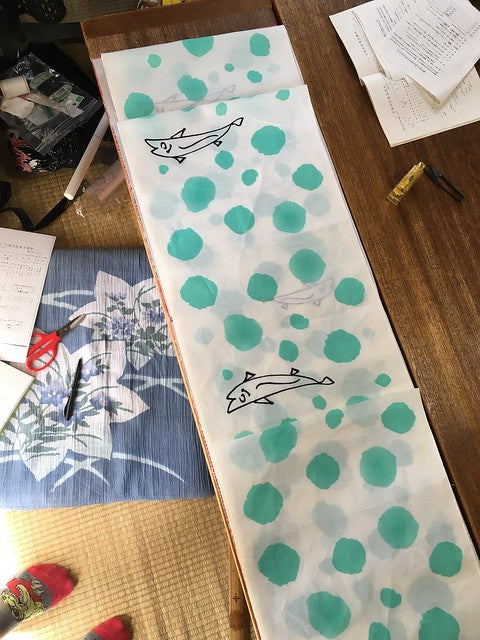
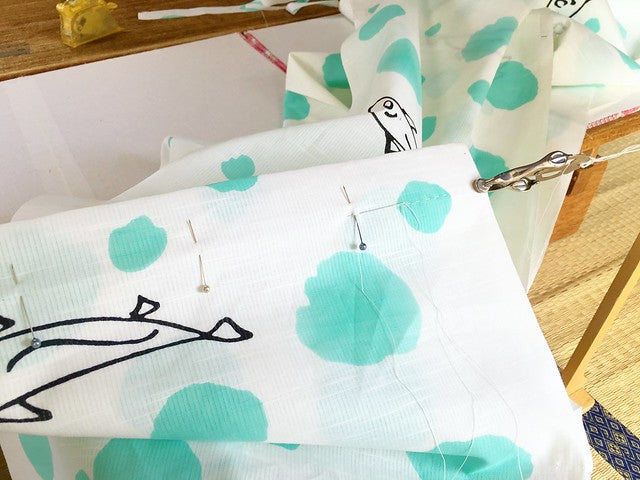
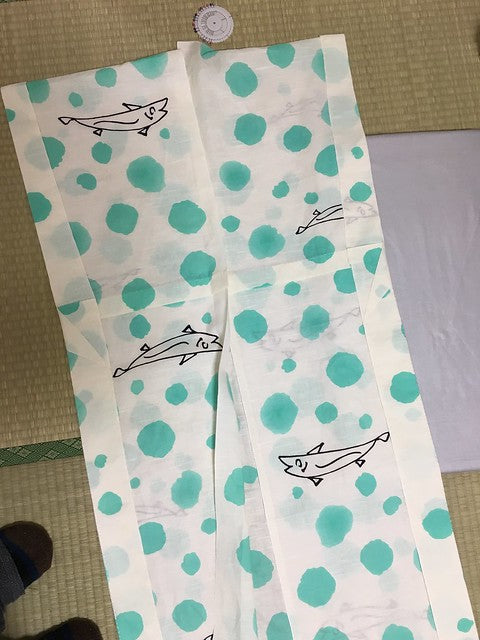
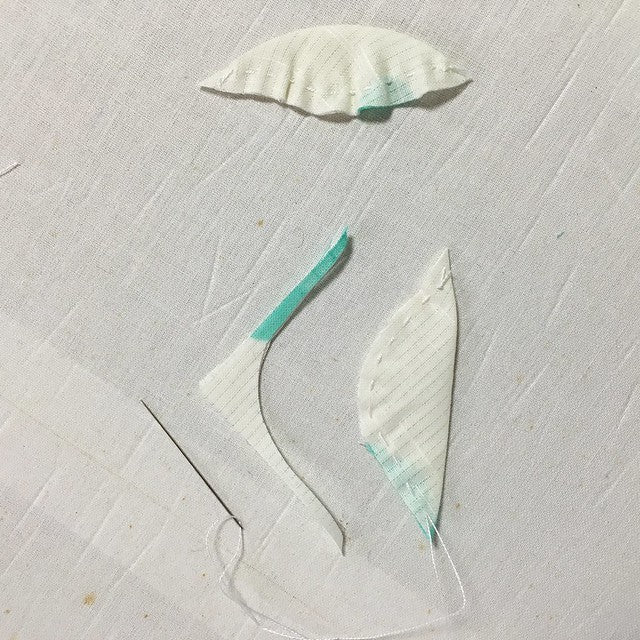
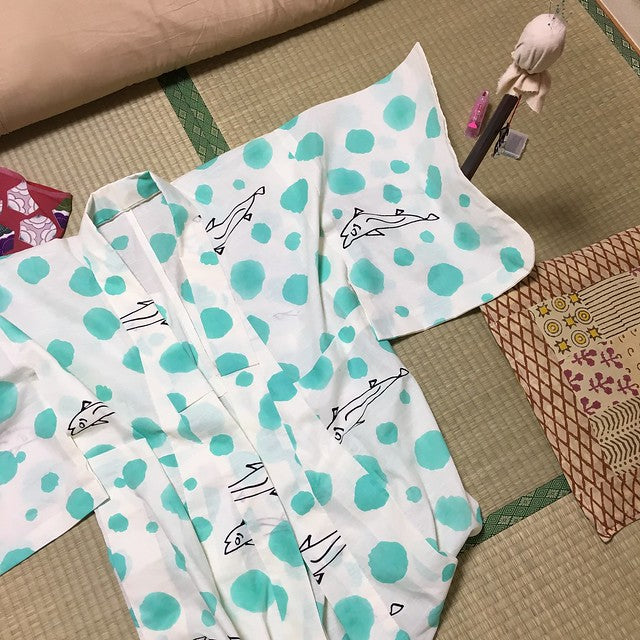
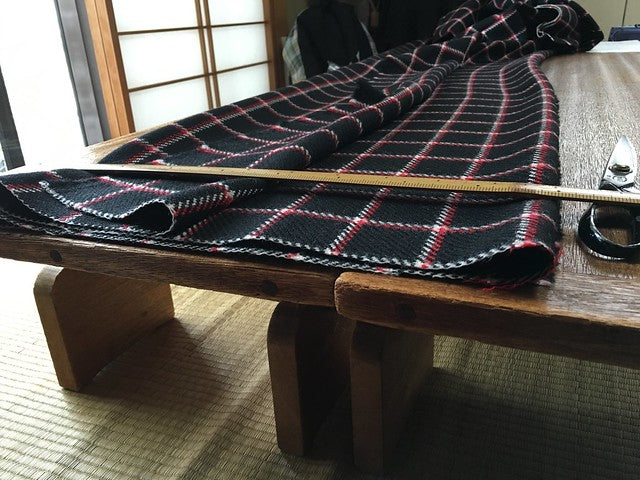
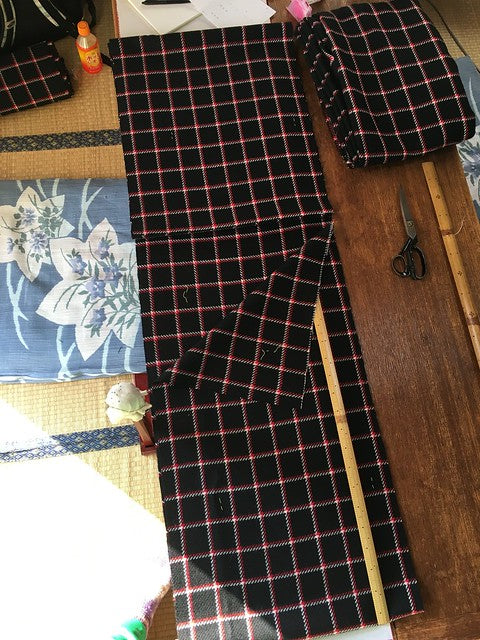
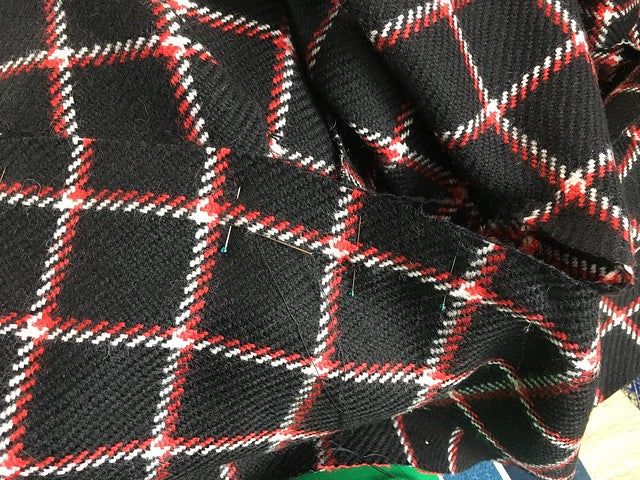
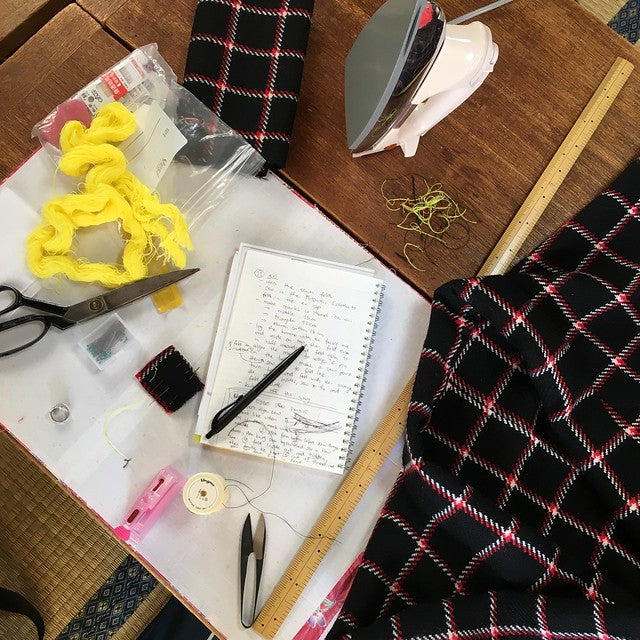
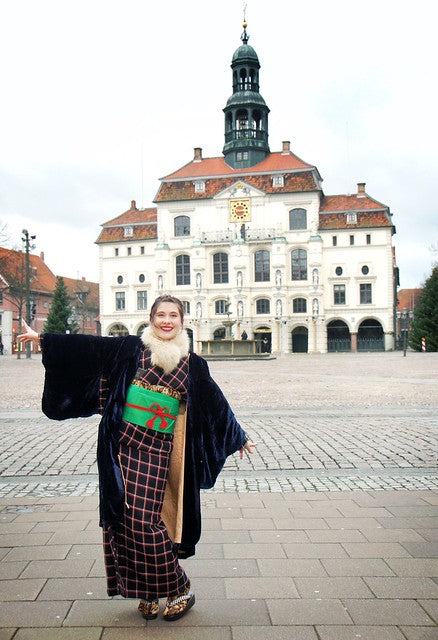
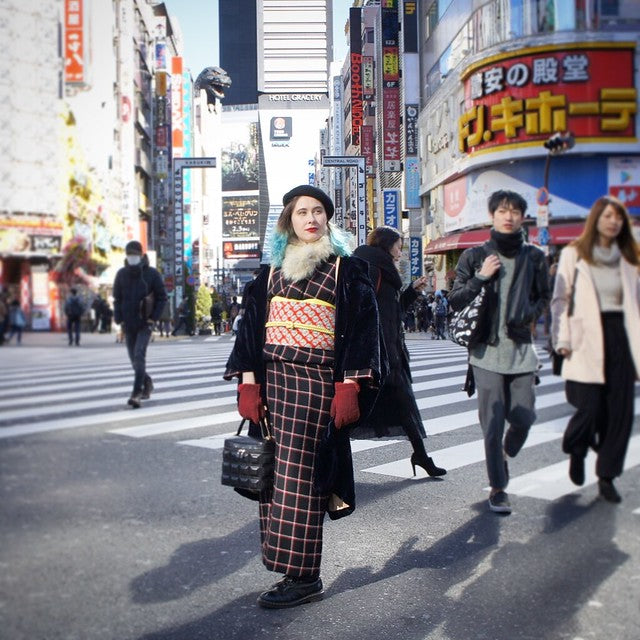

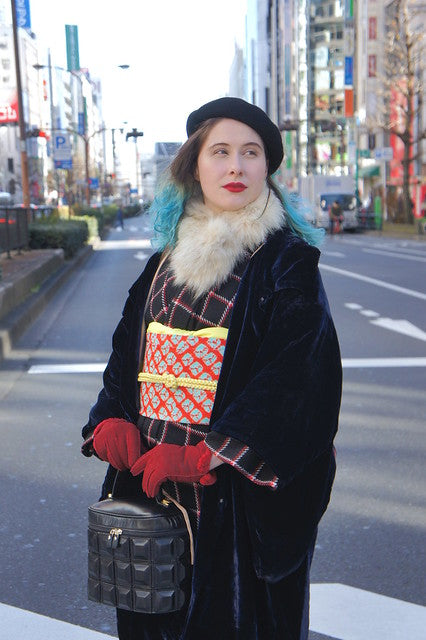

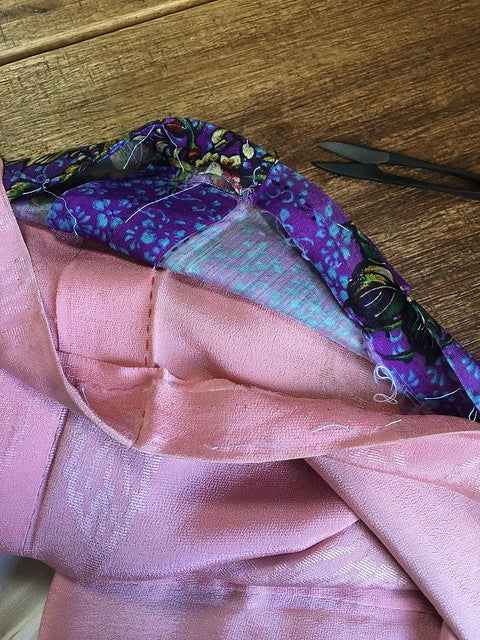
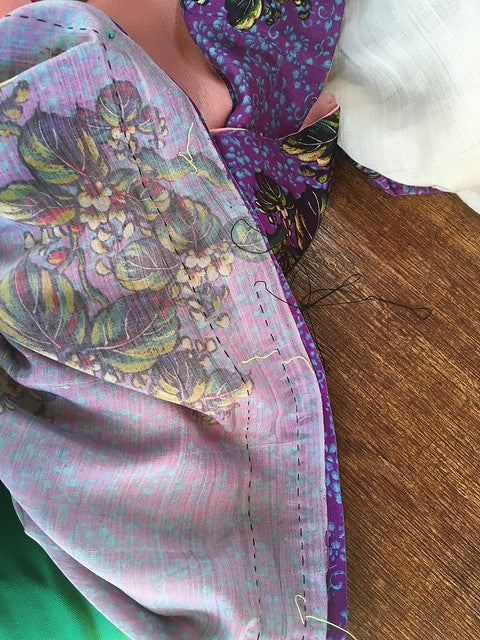

I love Kimono and I like sewing, also by Hand. I am plus size, so all Kimono are way too tight.
I would like to know more about re-tailoring Vintage second Hand Kimono, so I can wear them.
I started re-sewing (seam by seam) on my own with an unlined juban for training after checking online how to sew unshin.
Can you provide Help, or a helpful book.
Like to know more about widening a lined Kimono.
Thank you so much for your support.
I like you post about wasai very much. I love Kimono, but due to my wide hips, I need to extend the Kimono width to wear any.
This topic is actually my topic: Retailoring, change an existing kimono to my size.
Like to hear more details about it. Best , how to change a lined Kimono. A hitoe one seems more easy to change.
Love to hear more.